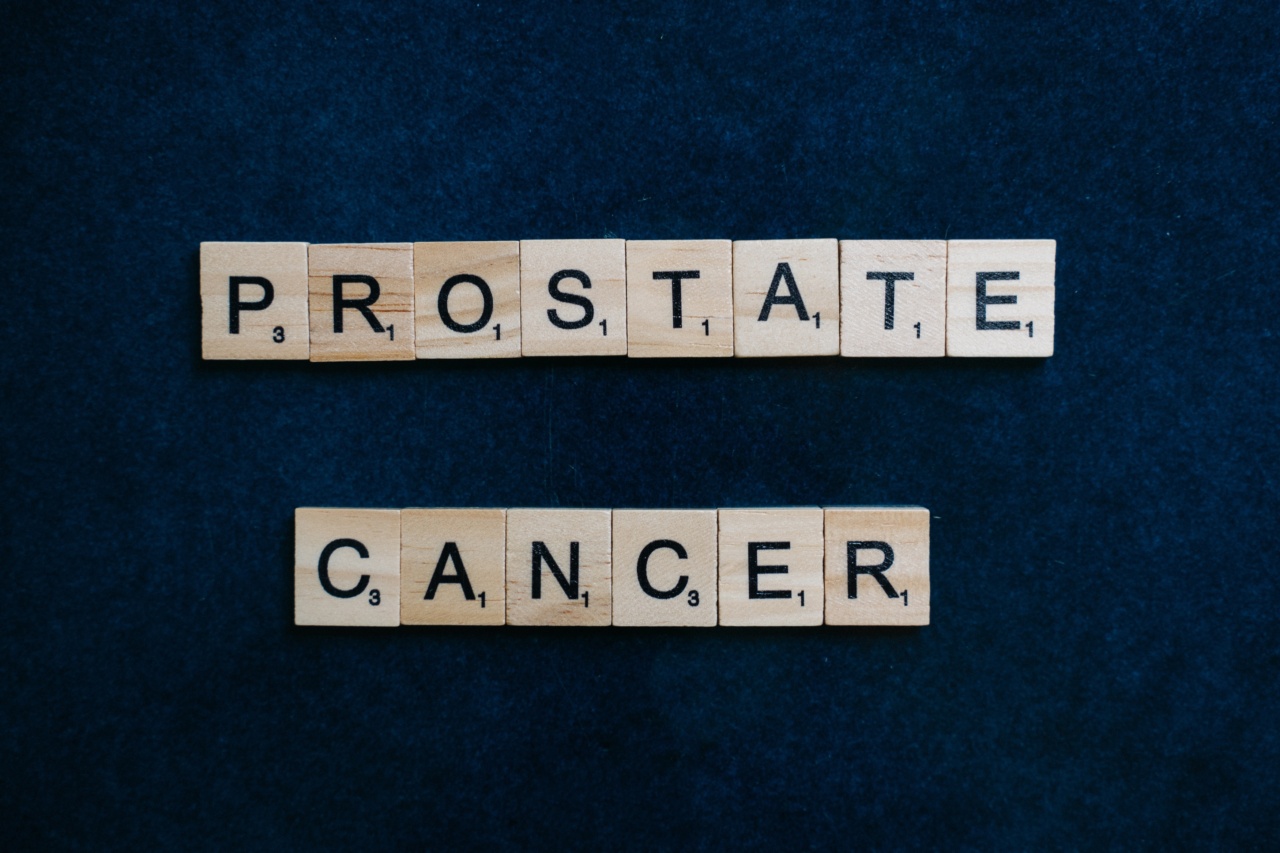Erectile dysfunction (ED) is a common concern for men who have undergone treatment for prostate cancer.
The prostate gland plays a crucial role in sexual function, and any damage or removal of the gland can lead to difficulties in achieving and maintaining an erection.
Types of Treatments for Prostate Cancer and Their Effects on Erectile Function
There are different treatment options available for prostate cancer, including surgery, radiation therapy, hormone therapy, and chemotherapy. Each treatment method has its own impact on erectile function.
Surgery: Radical Prostatectomy
Radical prostatectomy is a surgical procedure used to remove the prostate gland. This procedure can lead to temporary or permanent erectile dysfunction.
The risk of developing ED after surgery depends on various factors, including the patient’s age, overall health, and the surgeon’s expertise.
Radiation Therapy: External Beam Radiation and Brachytherapy
External beam radiation therapy and brachytherapy are common treatments for prostate cancer. While these procedures target cancer cells, they can also damage the nerves and blood vessels responsible for erection.
The onset of ED after radiation therapy can be gradual and may worsen over time.
Hormone Therapy: Androgen Deprivation Therapy
Androgen deprivation therapy (ADT) is often used alongside radiation therapy or as a primary treatment for advanced prostate cancer. ADT reduces testosterone levels, which can have a significant impact on erectile function.
Many men experience ED during hormone therapy, but the condition can improve once the treatment is completed.
Chemotherapy
Chemotherapy is primarily used for advanced prostate cancer that has spread to other parts of the body.
While chemotherapy drugs may not directly cause ED, they can contribute to fatigue, depression, and anxiety, which can indirectly affect sexual function.
Psychological Impact of Erectile Dysfunction
The diagnosis of prostate cancer, coupled with the potential side effects of treatment, can have a significant psychological impact on men. Anxiety, depression, and a loss of confidence can contribute to the development or worsening of ED.
It is important for men to address their emotional well-being as part of their overall treatment and recovery.
Managing Erectile Dysfunction After Prostate Cancer
While dealing with ED after prostate cancer can be challenging, there are various strategies and treatments available to help overcome this issue.
It is essential for men to discuss their concerns openly with their healthcare providers to find the most suitable approach.
1. Medications
Oral medications such as sildenafil (Viagra), vardenafil (Levitra), and tadalafil (Cialis) are commonly prescribed to improve erectile function.
These medications work by enhancing blood flow to the penis, making it easier to achieve and maintain an erection. However, they may not be suitable for everyone and can have side effects, so consultation with a healthcare professional is crucial.
2. Penile Injections and Suppositories
Penile injections and suppositories are alternative treatment options for ED. These medications help relax the blood vessels in the penis, promoting increased blood flow and facilitating an erection.
Patients must receive proper training on how to administer these treatments to ensure their effectiveness and safety.
3. Vacuum Erection Devices
A vacuum erection device (VED) is a non-invasive device that creates a vacuum around the penis, drawing blood into it and causing an erection. Once the erection is achieved, a constriction ring is placed at the base of the penis to maintain it.
VEDs can be an effective solution for men who do not respond to or prefer not to use medications.
4. Penile Implants
For men who do not respond to other treatments, penile implants offer a long-term solution for ED. There are two types of penile implants: inflatable and malleable.
Inflatable implants allow the penis to remain flaccid until an erection is desired, while malleable implants keep the penis semi-rigid at all times. Surgery is required to implant these devices, and consultation with a specialist is necessary to determine the most suitable option.
5. Pelvic Floor Exercises
Pelvic floor exercises, such as Kegel exercises, can help strengthen the muscles responsible for erections. These exercises involve contracting and relaxing the muscles that control urinary and sexual function.
Regular practice of pelvic floor exercises can lead to improved erectile function and urinary control.
6. Psychological Support
Dealing with ED after prostate cancer requires addressing the psychological aspects of the condition.
Seeking support from therapists, joining support groups, or talking to a counselor can help men cope with the emotional impact of ED and improve their overall well-being.
7. Lifestyle Modifications
Adopting a healthy lifestyle can have a positive impact on erectile function.
Maintaining a balanced diet, engaging in regular physical activity, reducing stress, and avoiding tobacco and excessive alcohol consumption can contribute to better sexual health.
8. Education and Communication
Informing oneself about ED and openly discussing symptoms, concerns, and treatment options with healthcare providers and partners is crucial.
Building a supportive network and involving partners in the treatment process can lead to better outcomes and improved intimacy.
9. Alternative Therapies
Some men turn to alternative therapies such as acupuncture, herbal supplements, and special diets to address ED. While these approaches may work for some individuals, scientific evidence supporting their efficacy is limited.
It is important to consult with healthcare professionals before trying any alternative therapies.
10. Follow-Up Care
Regular follow-up care is essential to monitor the progress of ED treatment and make adjustments as necessary.
Healthcare providers can assess the effectiveness of the chosen treatment method, address any concerns, and offer guidance throughout the recovery process.
Conclusion
Overcoming erectile dysfunction after prostate cancer is possible with the right knowledge, support, and treatment options. While the journey may be challenging, men can regain their sexual function and achieve a fulfilling intimate life.
Open communication, proper medical guidance, and a holistic approach to recovery are key to successfully managing ED and maintaining overall well-being.


























